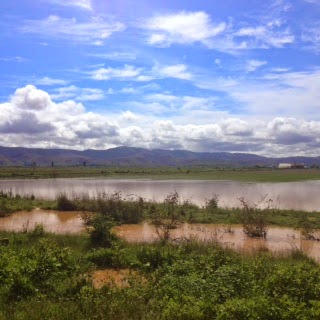The rasazy (midwife) told me the birth was going to be difficult because the baby was breech. She prepared the ventilator and bulb suction (equipment from the HBB training) ahead of time. At 3:30am I heard knocking on my door and jumped up to run to the CSB. The woman in labor squatted on the bed while leaning her back against a family member. They fed her spoonfuls of sugar to give her energy. The rasazy kept yelling 'mafy, mafy!' or 'harder, harder!' The baby's body evetually came out but the woman was too exhausted to push the head. The rasazy had me run wake the doctor. Together they got the baby's head out but she was limp and blue. The rasazy used the bulb suction in the baby's mouth and nose which was so full of meconium that it was dribbling out. The doctor stepped in and rubbed the baby's back then used the ventilator. However there were no signs of life. After minutes passed they were forced to give up. The rasazy dressed the lifeless body which was just horrible to see. The baby didn't even get a chance at life. She set the baby on the scale and then helped mom with the placenta. The mood was certainly somber but no one showed emotion besides me fighting back tears. The mother stared at the ceiling without a word then moved to another room. One family member stroked the baby's cheek then showed her to the father. The family is responsible for cleaning up after birth and so the rasazy and I left at that point. She explained that the family would take the body to the tomb to be buried with other family members.
I was so impressed with the doctor and rasazy for their quick actions and use of the new equipment. There was nothing more they could have done to help that baby. I understand this can happen no matter where you are in the world but there also many deaths that could be prevented with the proper equipment and usage. The hospital staff do the best with what little resources they have often serving more than 10,000 people and sometimes working without pay. I am constantly amazed by my CSB staff and AC's dedication to our community.

















